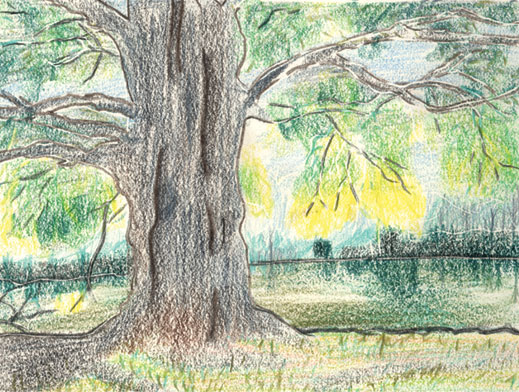A sample story from the children’s ToM experiment
Physical segment:
Out behind the big red barn at the edge of the walnut grove is the most magnificent pond in the neighborhood. It is wide and deep, and shaded by an old oak tree. There are all sorts of things in that pond: fish and old shoes and lost toys and tricycles, and many other surprises.

People segment:
Old Mr. McFeeglebee is a gray wrinkled old farmer, who wears gray wrinkled old overalls, and gray wrinkled old boots. He has lived on this land his whole life, longer even than most of the trees. Little Georgie is Mr. McFeeglebee’s nephew from town.
Mental segment:
Mr. McFeeglebee doesn’t want any little boys to fish in the pond. But little Georgie pretends not to notice. He likes fishing so much, and besides, he knows he can run faster than anybody in town. Georgie decides to run away really fast if Mr. McFeeglebee sees him fishing.
Question:
What do you think? Does little Georgie fish in the pond? [pause] Good job! Time for the next story!
This sample is part of a longer MIT News feature, The Story of a Study of the Mind.
Keep Reading
Most Popular
Large language models can do jaw-dropping things. But nobody knows exactly why.
And that's a problem. Figuring it out is one of the biggest scientific puzzles of our time and a crucial step towards controlling more powerful future models.
How scientists traced a mysterious covid case back to six toilets
When wastewater surveillance turns into a hunt for a single infected individual, the ethics get tricky.
The problem with plug-in hybrids? Their drivers.
Plug-in hybrids are often sold as a transition to EVs, but new data from Europe shows we’re still underestimating the emissions they produce.
Stay connected
Get the latest updates from
MIT Technology Review
Discover special offers, top stories, upcoming events, and more.